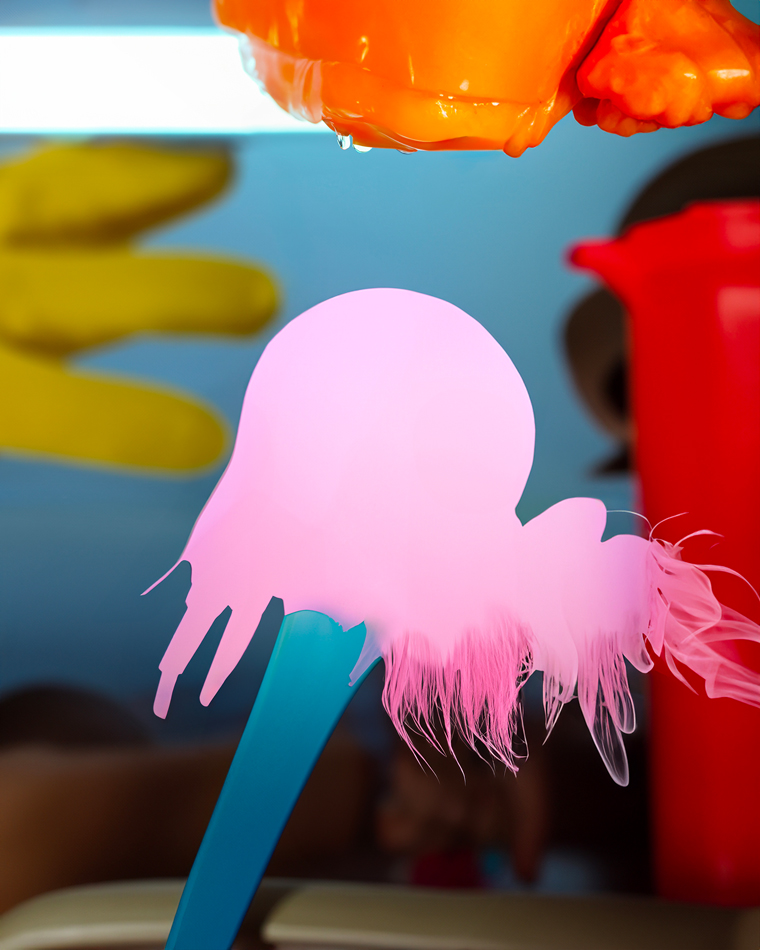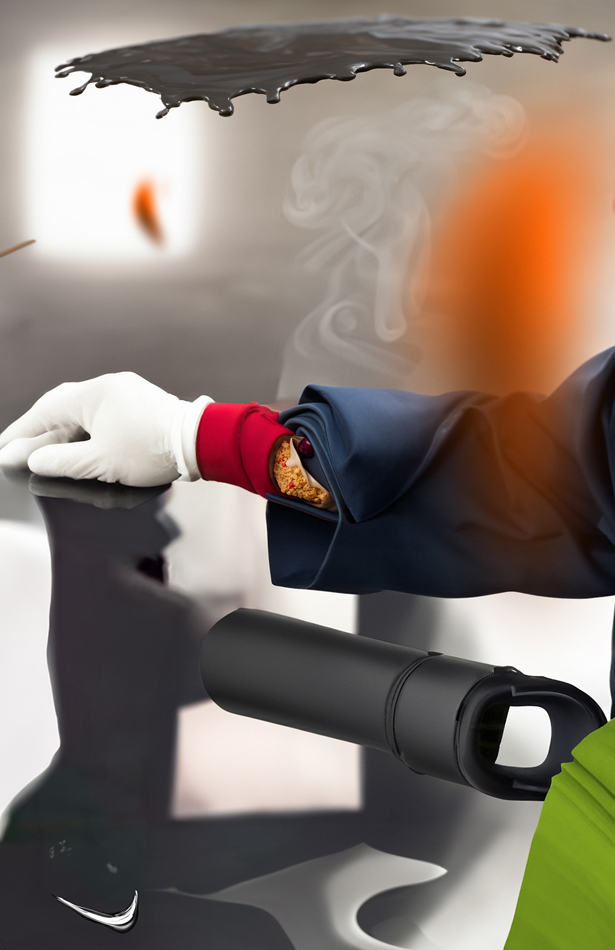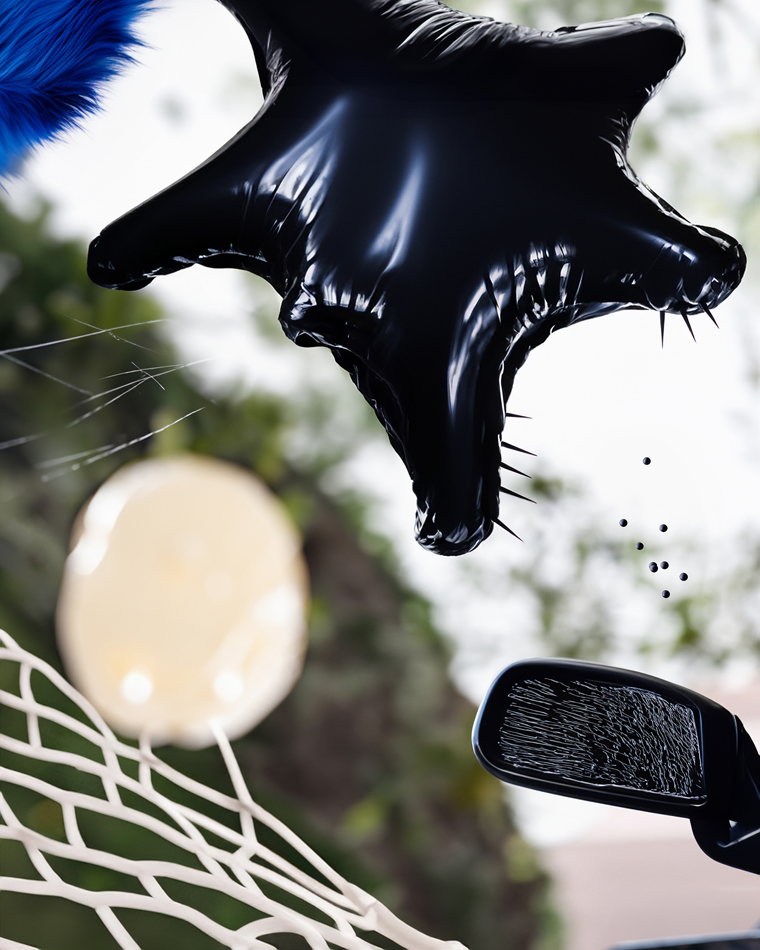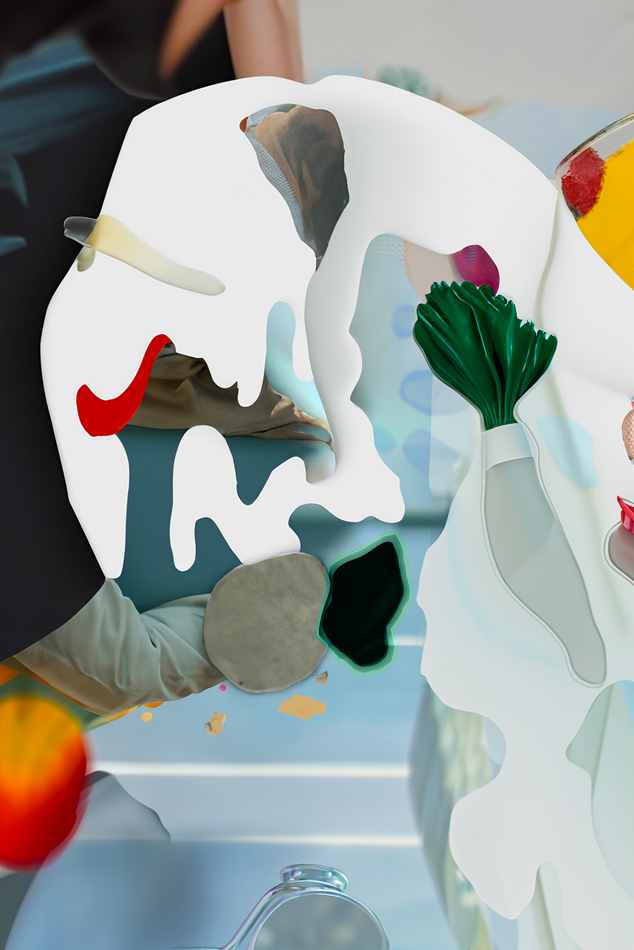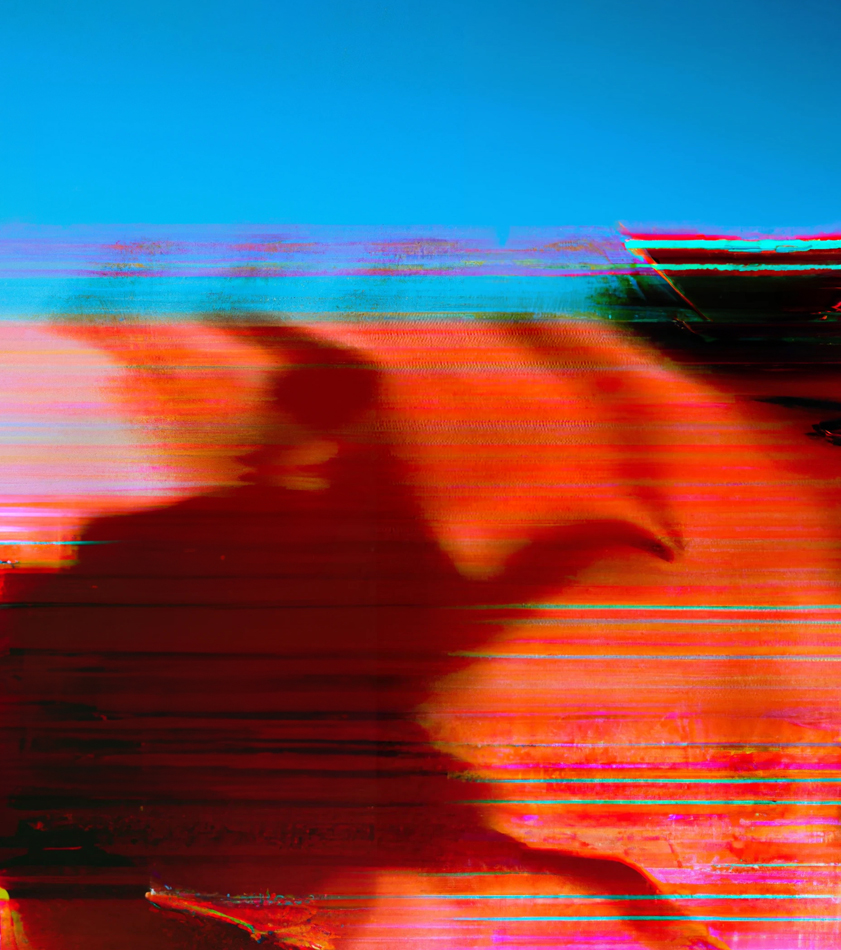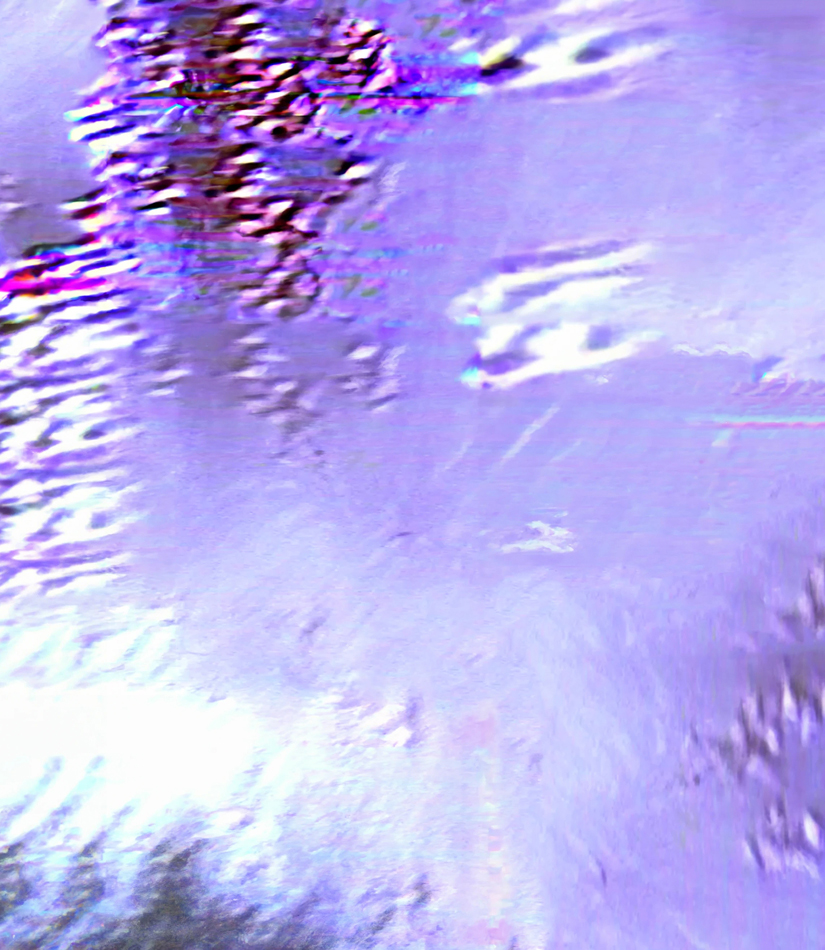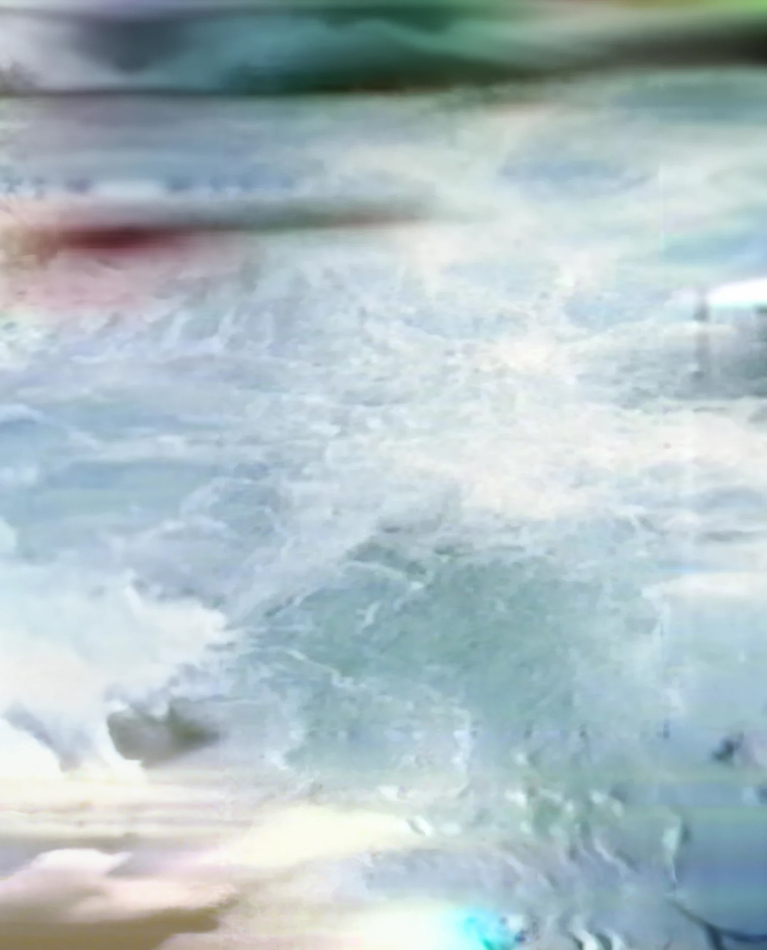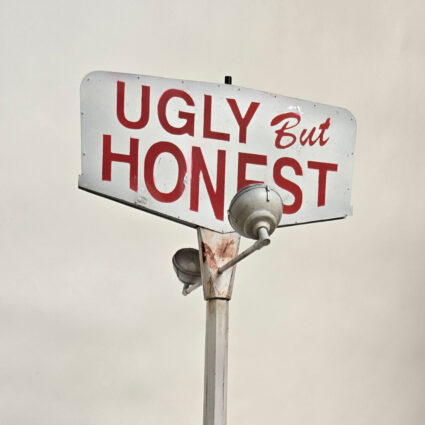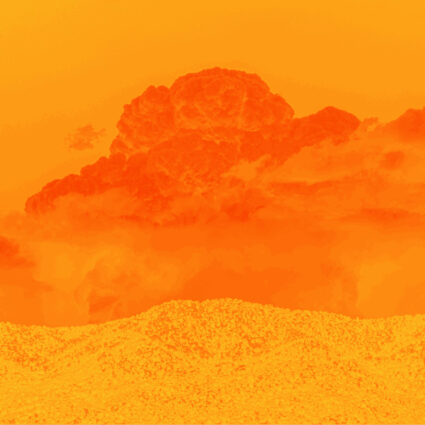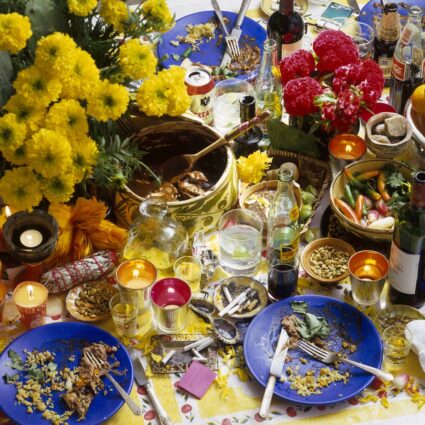AI tools just hit the mainstream, but Albuquerque-based artist Zac Travis has been messing with them for years—in trippy, analog ways.
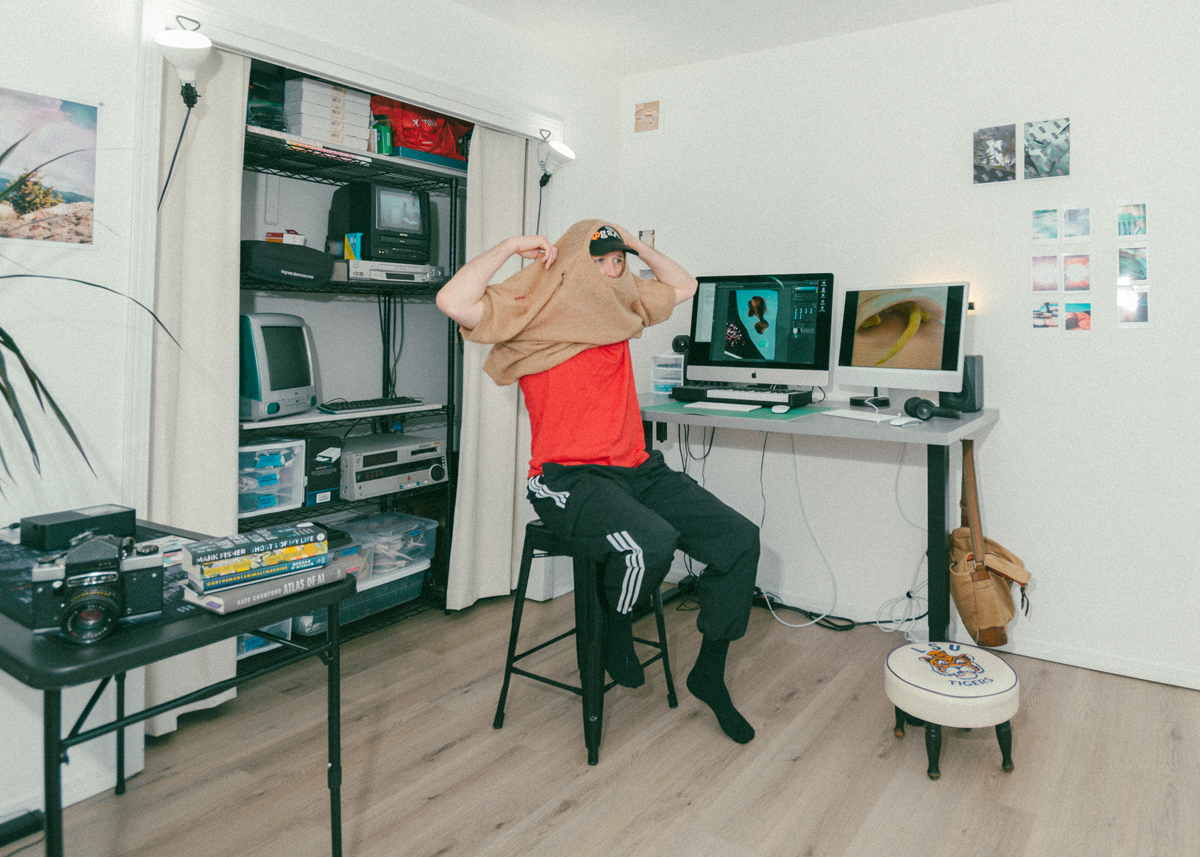
Zac Travis is doing everything that he can to break the internet. Stationed in a suburban neighborhood on the west side of Albuquerque, New Mexico, the artist, graphic designer and photographer has been working with different modes of artificial intelligence since 2017 after finding himself disenchanted with the limits of the still image. The formal language of the medium seemed to falter in the face of a burgeoning nihilistic sensibility that Travis felt himself sliding into after the 2016 election of Donald Trump; the world was increasingly absurd, almost as absurd as the content generated by the text-to-text AI models that he was coming across in his explorations of internet subcultures.
One particular 2018 tweet showcased a mock script that the author claimed was generated by a bot that had consumed 1000 hours of Olive Garden commercials, resulting in a dialogue rife with issues, both interpersonal and grammatical, that we would never expect to hear in a real world restaurant context. That joke was a game-changer for Zac Travis. “I was really intrigued by that textual absurdism, which set me off on following this long train of thought where I began looking at text as a form of art-making. I was intrigued by this breakdown of linguistic formalities and the act of finding humor in all of this weird language being spit out by this so-called intelligence.”
You don’t actually realize what technology is there until it’s broken… until [it falls] apart in front of you.
An initial interest in Markov chain models (AKA – the straightforward, predictive algorithms that we can thank for giving us things like text message suggestions) has since blossomed into a stacked technical toolkit that Travis embraces in his quest to see how far technology can be pushed before the cracks in its sleek veneer become apparent. “One of the things that stands out to me the most when I think about my practice as a graphic designer or artist or photographer,” says Travis, “is that you don’t actually realize what technology is there until it’s broken… [we perceive the tools we’ve built] as perfect for the user until they fall apart in front of you.”
Travis’s willingness to consider the critical, creative possibilities offered by the enmeshment of art and tech pushes back on the fearful attitudes felt among many artists as more powerful AI models start to garner larger headlines. Even as the environmental implications of AI energy use loom large in his psyche, Travis chooses to see these technologies as flawed-but-active collaborators in the creation of original works as opposed to anti-art agents. Two new series, hallucinations and GEN GEN, play off the inherent limitations of generative technology as the artist pits algorithms against each other, constructing battles that result in images that are as surprising in their materiality as they are liberated by a sense of play.
The origins of hallucinations can be traced back to an archive of strange solutions to New York Times word games, namely Letter Boxed, that Travis began to build in 2022. “I started thinking about some of these winning phrases, like ‘logs sour roach hacking’, for example, as these interesting, abstract textual arrangements. I collected them and started to consider using them as prompts to actually try to break some of these text-to-image AI models, especially Adobe’s newly launched AI engine, Firefly.’’

Since, at its core, Adobe Firefly is designed to be a predictive text-to-image system, these non-literal and nonsensical phrases operate outside of the logical system that the algorithm is capable of understanding. How do you generate an image that represents a phrase like “symptomatic tongue war illusory experience”? If you’re an AI model, you can’t, and so the result instead is a splintering firecracker surrounded by bits and pieces of digital ectoplasm set against soft blues and triangular flags—a formally strong digital abstraction made possible by the collision of human and machine intelligences.
GEN GEN, on the other hand, is a body of work that has roots in aberrations found in deteriorating VHS tapes. Travis carefully culls these source tapes from his extensive archive that hails from the tail end of the VHS format’s relevance in the late 1990s and early ’00s. After digitally seizing frames of analog static, Travis processes these through the AI text-to-image generator Midjourney to see what sorts of painterly pixels the program may add.
I don’t believe in originality at all.
In bball games of 1992, cotton-candy rectangles crisscross each other, forming a hazy scene reminiscent of a vintage desert sunset even as the edges within the image feel polished, a combination that reflects some kind of low-tech futurism. Interestingly, the VHS-adjacent imagery that the algorithm in question was trained on is likely imitation itself, “I’m almost certain that the majority of images that Midjourney is trained on are faux-VHS, meaning images processed through a VHS filter, so they’re basically fake.”
Travis maintains creative agency through these processes by selectively generating and regenerating different parts of the compositions and flexing his Photoshop chops, achieving unified-but-dynamic results. However, the artist’s views on the myth of a truly unique result hearken back to the open-source roots of the internet.
Travis says, “I don’t believe in originality at all. As artists, all of the images that we make, they’re all coming from something that we’ve seen before—that’s the necessary precondition before new things mutate into what they are now. What I just described is machine learning and the foundation of artificial intelligence; we’re taking in information and using it to spit out something new.”



